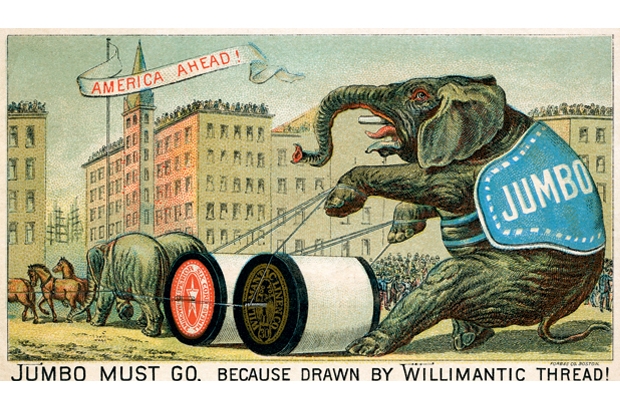On 15 September 1885, the world’s most famous elephant, Jumbo, was killed by a train. Jumbo, the star attraction at P.T. Barnum’s travelling circus, was crossing the track at a station in Ontario, Canada. His handler, Matthew Scott, saw the danger. But ‘the elephant, fatally confused, trumpeted wildly and ran towards the oncoming train’. The force of the locomotive crushed Jumbo’s skull and drove one of his tusks ‘back into his brain’. But was this really an accident, or had Barnum, or Scott, or both, committed elephanticide?
When the engine hit him, Jumbo was dead within minutes. A bull African elephant is no match for a freight train. But if, for whatever reason, you needed to kill an elephant in 1885, there would be no better way than to engineer a train accident. Elephants, as John Sutherland points out, are very, very hard to kill. He gives us some examples. In 1826, an elephant called Chunee, an attraction at a London menagerie, started going wild, as bull elephants do from time to time when they reach maturity — they are subject to what Sutherland describes as a ‘storm of testosterone’. Chunee’s owner, who couldn’t live with the situation, hired two soldiers to shoot him. But the execution was a terrible mess. The soldiers lined up outside the elephant’s cage, and shot endless volleys into his thick hide. But this was not decisive. In the end, Chunee had to be stabbed to death with swords — a terrible, cruel death.
In another incident, this time in America’s Deep South, a circus elephant called Mary killed three men. After the third killing, in which she picked a man up with her trunk and flung him to the ground, she was sentenced to death by hanging.








Comments
Join the debate for just £1 a month
Be part of the conversation with other Spectator readers by getting your first three months for £3.
UNLOCK ACCESS Just £1 a monthAlready a subscriber? Log in